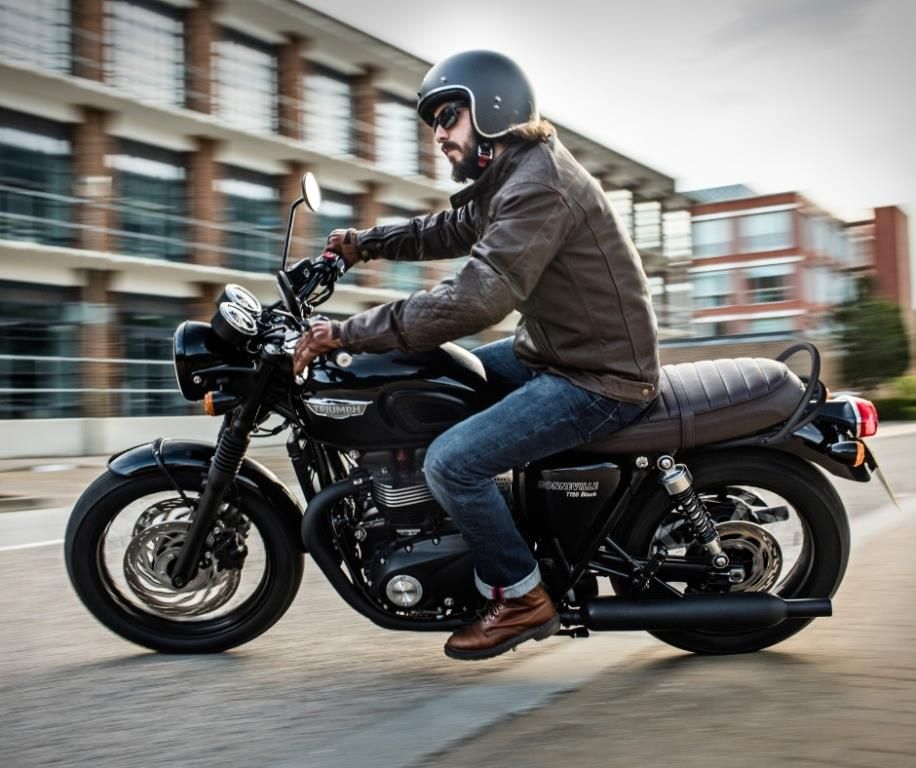History of the Triumph Bonneville

With its iconic style, the Triumph Bonneville motorcycle up for grabs in the latest Mater Cars for Cancer prize draw is its own history book – a history book we wanted to open. From its beautifully raw shape to the legendary name, discover the incredible Triumph Bonneville story below.
Triumph’s Early Years
At the beginning of it all was Siegfried Bettmann’s decision to move to England in 1883. With his experience working for a sewing machine company, he decided to start his own sewing machine import business. But to spice things up a bit, he also started selling local bicycles.
By 1889, Siegfried had named the company Triumph Cycle Co. Ltd. and had employed two ambitious German engineers. Their idea of the company’s future was based on manufacturing their own products. Soon enough they were building their own bicycles and eventually, in 1902, their own Triumph motorcycles.
Making the Iconic Motorcycle
From 1902, the Triumph motorcycle kept evolving. While early models used bicycle frames and imported engines, later models included more and more homemade components. By 1905, they had an 80km/h motorcycle manufactured completely in Britain.
Ten years later, Triumph was producing motorcycles that ranked high in famous races like the Isle of Man TT. Then, as WWI broke out, Triumph focused its efforts on developing 30,000 Type H roadsters for the Allied Forces. Triumph motorcycles would also be used in WWII and would make even more racing headlines.
Between 1906 and 1954, some of the classic models that emerged were the Triumph:
- Type A Roadster
- Model X
- Speed Twin
- Tiger 100 (T100)
- 500CC TR5
- 650CC Thunderbird 6T
- Tiger 110 (Tiger-bird).
Each of these models had a significant impact on the industry. The Thunderbird even made it on the big screens in The Wild One – starring Marlon Brando and his very own Triumph Thunderbird motorcycle.
Beginning the Bonneville Legacy
Finally, we reach the Bonneville Salt Flats of Utah in 1955. The ground is a sea of white, the horizon is calm and flat, and Johnny Allen is driving a modified 650cc Triumph (called The Devil’s Arrow) over 310km/h. This was a land-speed record and gave way to the new legacy of Triumph.
Triumph motorcycles would keep the land-speed record for another 15 years.
In honour of breaking the record, Triumph introduced the T120 Bonneville and other models with the Bonneville name. These motorcycles did The Devil’s Arrow proud, having huge successes in the motorcycle racing industry.
Bonneville’s Rebirth
After numerous unfortunate events, Triumph released its last Bonneville in ’83. But the Bonneville production line would only sleep for 20 years, until John Bloor launched a new Bonneville series that rivalled the performance and style of Harley Davidson’s Sportster.
By giving old-school styles new-age power, Triumph Bonneville motorcycles roared back onto roads worldwide.
The New Triumph Bonneville T120
Over 100 years later, the Triumph name has evolved from bicycles to beloved motorcycles. And it’s the new Bonneville T120 that best encapsulates its rich history and beautiful look. The motorcycle preserves the original look of the 1959 T120 and offers modern power – a 2-cylinder, 4-stroke engine.
This icon is one of our favourites at Mater Cars for Cancer, and we’re proud to offer it alongside the Mustang Bullitt in our latest car lottery. To add these legends to your garage, make sure you purchase your tickets today before it’s too late!
